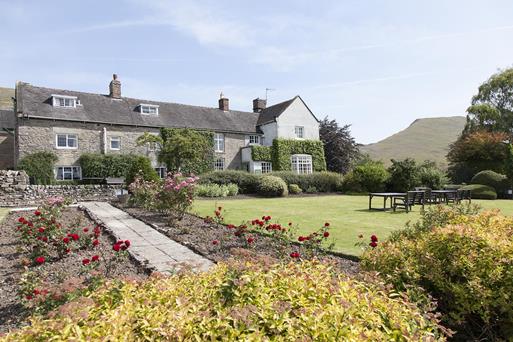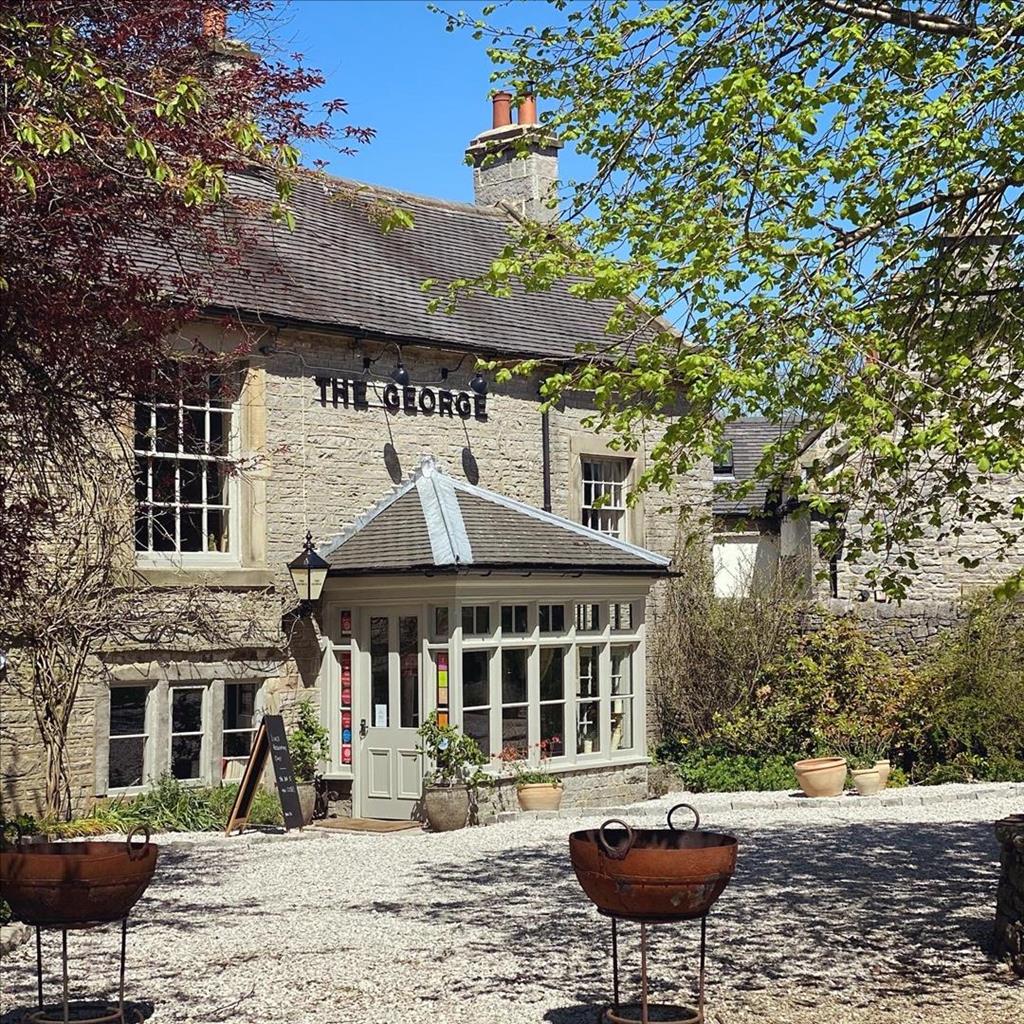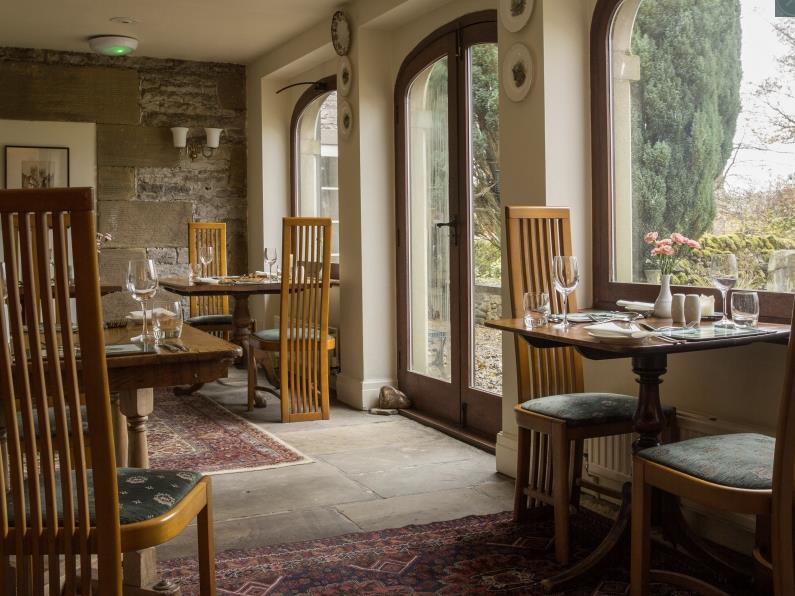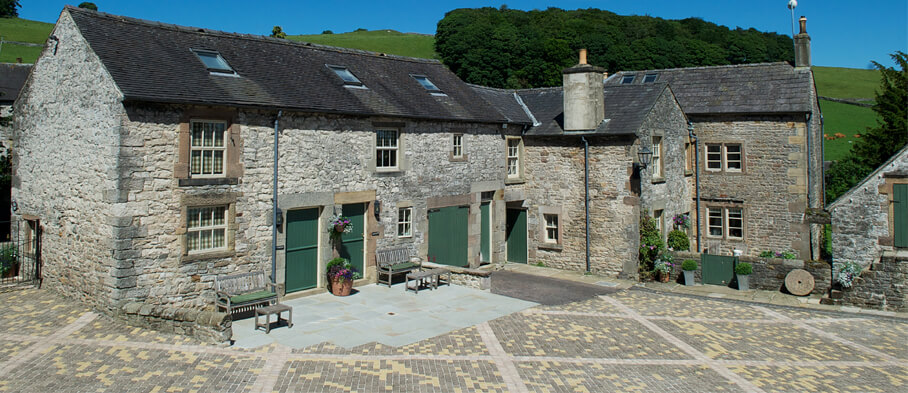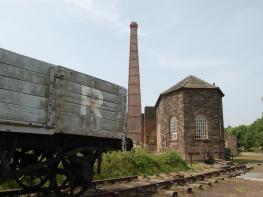Situated in the picturesque countryside of the Peak District, The Bentley Brook Inn offers…
The Tissington Trail

From a perfect village with a vintage sweet shop to an easy going railway trail
4.5 miles (7.2kms)
About the walk
The approach to Tissington is through a magnificent avenue of lime trees, and when you first see the place it completes the idyll of a perfect village. On one side of a huge green is Tissington Hall, the home of the Fitzherbert family since the reign of Elizabeth I; on the other a neat row of cottages and a slightly elevated Norman church. The trouble with Tissington is that it is too perfect, and to avoid the crowds you’ll have to visit mid-week. On this walk you save Tissington village for last, preferring instead to take to the Tissington Trail, the former trackbed of the Ashbourne-to-Buxton railway, which was closed by Dr Beeching in 1967. The route soon leaves the old track behind and descends into the valley of Bletch Brook, then out again on to a pastured hillside. Now you see Parwich, tucked in the next valley beneath a wooded hill. Overlooking the village is a fine 18th-century, red-brick building, Parwich Hall.
Parwich isn’t as grand as Tissington, but it has a village green, and there’s a duck pond too. You may see moorhens and their young swimming about among the tangled irises. But Parwich is a more peaceful place and the winding lanes are almost traffic-free in comparison. St Peter’s Church is Victorian, but incorporates the chancel arch and a carved tympanum from the old Norman church.
Leaving Parwich behind, the path continues over the hillside, back into the valley of Bletch Brook and the Tissington Trail, then back for a better look at Tissington. The village is known for its five wells, dotted along Chapel Lane, though note at least one (Coffin Well) is up a private driveway. Every year on Ascension Day Tissington’s locals dress these wells. This involves making a clay-covered dressing frame on to which pictures are traced. Flower petals are then pressed into the clay, creating the elaborate patterns and pictures you see. The ceremony is unique to Derbyshire and the Peak District. Originally a pagan ceremony to appease the gods into keeping pure water flowing, it was later adopted by the Christian religion. During the Black Death, when people from neighbouring villages were being ravaged by the plague, the Tissington villagers were kept in good health, due, they believe, to the pure water from the five wells. At the base of the village there’s a fine duck pond, complete with a handful of ever-hungry ducks, but most eyes will be on the magnificent Jacobean hall. If it’s closed to visitors, you can view it through the fine wrought-iron gates built by Robert Bakewell, or get an elevated view from the churchyard.
Walk directions
From the Tissington Trail car park follow the trail northbound along the trackbed of the former Ashbourne-to-Buxton railway. Take the second footpath on the left – by Trail Barn, signposted to Tissington and Parwich. This crosses the trail heading to the right over a bridge and along a cart track towards Shaw’s Farm.
Cross a cattle grid on the first bend, then descend across fields on the waymarked but trackless path into the valley of Bletch Brook. Cross two stiles at the field boundaries and over a footbridge spanning the brook itself. A more definite path establishes itself on the climb out of the valley, passing under power lines, then across a sleeper bridge stile.
Follow the left field edge through two fields then squeeze through a stile. Descend a field towards the left edge of Parwich then bend briefly right along the next (short) field edge. Cross another stile, then descend a shady path to the village, emerging in view of the church.
At a path junction, turn right to explore the village. Otherwise go left following a path beside a small brook. Turn left on to a lane and head out of the village. Immediately past Brook Close Farm’s driveway take a footpath left, roughly contouring across pasture. Bend left and uphill near the field edge, through a gate, then diagonally left across the next field. Cross a gate and a squeeze stile, then follow a sometimes muddy, tree-lined, short track ahead.
On entering the next field turn left. Follow the hedge on the left, then, veering half-right at the signpost, descend to recross Bletch Brook via two footbridges. Climb up the middle of the next long field before zigzagging up the steep upper slopes and then bending right to reach the bridge over the Tissington Trail. A long access path heads left before the bridge and down to the trail. Now follow the trail right past the Crakelow cutting.
After about 500yds (457m) take a footpath left towards Tissington. Go over a stile and cross to the right-hand corner of a field. Now follow a green lane, all the way down to the road at the edge of Tissington village
Turn left along the lane to reach Chapel Lane. Explore the village, then take a left turn at either the T-junction at the bottom of The Foot or below the tea rooms, on to the road at the south of the village. Rise up round a bend to the right then fork right into the car park.
Additional information
Field paths, lanes and an old railway trackbed, many stiles
Village and rolling farm pastures
Mostly on farmland, keep dogs on lead and under control; avoid long stretchy leads on trail to avoid tripping other users
OS Explorer OL24 Peak District – White Peak Area
Tissington Trail pay car park
At car park
WALKING IN SAFETY
Read our tips to look after yourself and the environment when following this walk.
Find out more
Also in the area
About the area
Discover Derbyshire
The natural features of this central English county range from the modest heights of the Peak District National Park, where Kinder Scout stands at 2,088 ft (636 m), to the depths of its remarkable underground caverns, floodlit to reveal exquisite Blue John stone. Walkers and cyclists will enjoy the High Peak Trail which extends from the Derwent Valley to the limestone plateau near Buxton, and for many, the spectacular scenery is what draws them to the area.
The county is well endowed with stately homes – most notably Chatsworth, the palatial home of the Duke and Duchess of Devonshire, with its outstanding collections of paintings, statuary and art. Other gems include the well preserved medieval Haddon Hall, the Elizabethan Hardwick Hall, and Kedleston Hall, whose entrance front has been described as the grandest Palladian façade in Britain.
The spa town of Matlock is the county’s administrative centre and other major towns of interest include Derby and the old coal mining town of Chesterfield, with its crooked spire. Around the villages of Derbyshire, look out for the ancient tradition of well dressing, the decorating of springs and wells – the precious sources of life-sustaining water – with pictures formed from flowers.
Nearby stays
Restaurants and Pubs
Nearby experiences
Recommended things to do
Why choose Rated Trips?
Your trusted guide to rated places across the UK
The best coverage
Discover more than 15,000 professionally rated places to stay, eat and visit from across the UK and Ireland.
Quality assured
Choose a place to stay safe in the knowledge that it has been expertly assessed by trained assessors.
Plan your next trip
Search by location or the type of place you're visiting to find your next ideal holiday experience.
Travel inspiration
Read our articles, city guides and recommended things to do for inspiration. We're here to help you explore the UK.



